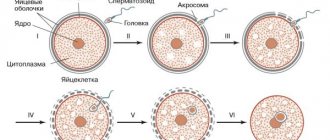Urgent birth - what is it?
Pregnancy, according to medical reference books, lasts an average of 280 days. During this time, the baby manages to turn from one cell into a complex, multicellular organism, he gains the ability to feel, perceive, and think. From 22 weeks of pregnancy, the fetus is considered viable, but this does not mean that it will necessarily survive if born so early.
The fact is that a child’s body must prepare for coming into this world as best as possible.
The environment inside the mother's womb is very different from the one into which the child will find himself after birth, and the little body must be prepared for serious stress.
Calculate the gestational ageIndicate the first day of the last menstruation12345678910111213141516171819202122232425262728293031JanuaryFebruaryMarchAprilMayJuneJulyAugustSeptemberOctoberNovemberDecember20192018Calculate
After 34 weeks of pregnancy in the baby's lung tissue, tiny alveoli begin to produce a special substance - surfactant. It, having accumulated in sufficient quantities, will allow the lungs to open and ensure free independent breathing. If there is not enough surfactant, distress syndrome and acute respiratory failure may develop, which is a common cause of disability and death in premature babies.
The child’s body weight is also important. From the second trimester, a thin fetus begins to gain weight due to an increase in the mass of subcutaneous fat. Weight gain lasts until the end of pregnancy. This is important not only to please mom and dad with a plump bottom and cheeks, but also so that the newborn can effectively retain his own body heat.
With malnutrition (low birth weight), the risk of systemic hypothermia and death of the child is higher.
The weight and readiness of the fetal lungs are two of the most important criteria for a baby to reach full term. It happens that even with premature birth, children are born with a normal weight, and it happens that even with a timely birth the weight is low. The readiness of the lung tissue may also be insufficient in a full-term baby, but more often this still happens with premature babies.
So, what kind of baby can be considered full-term? The answer is simple - born as a result of emergency childbirth. A term birth is a birth that occurs between 38 weeks of pregnancy and 42 weeks of pregnancy inclusive. This means that on any day of this period a full-term baby is born.
Childbirth from 22 to 27 obstetric weeks inclusive is considered premature. And the degree of prematurity is determined not by the duration of pregnancy, but by the weight and condition of the child’s respiratory organs.
From 42 weeks of pregnancy, there is a need for induction of labor - if it does not begin on its own, the woman is given stimulation, since postmaturity is also not the best option for the baby (the placenta has aged, it copes poorly with protective and nutritional functions, the baby’s head circumference is growing, which can make it difficult and complicate childbirth). After 42 weeks, one of the methods (Mifepristone, mechanical methods) provokes the onset of labor.
According to statistics, up to 80% of children are born between 38 and 42 weeks of pregnancy (at full term). 15-17% of births are premature, about 3% remain for “late” births.
It is difficult to say when labor will begin, unless, of course, we are talking about a planned caesarean section (surgically, on the recommendation of the Ministry of Health, you can give birth at any time according to indications, but usually from 39 completed weeks). In other cases (with or without a pessary, first birth or second - it doesn’t matter), doctors prefer to wait for the onset of natural labor contractions . It is through contractions that a woman’s body notifies that it is ready for a complex physiological process.
Do not confuse urgent labor with fast or rapid labor. A rapid birth is a birth that occurs too quickly, with a violation of the duration of the periods, and therefore this is considered a complication and can pose a danger to the woman in labor and the child. An urgent birth is an ideal option; it couldn’t be better (the baby is full term, the woman is ready).
Definition of deadlines
So that a woman can know how long she needs to carry a child until all systems of its body are fully formed, various methods are used in medical practice. But, unfortunately, none of them allows you to calculate the date of birth up to one day. Most often, several methods are used, and if taken together there are no conflicting results, then it is possible to determine with sufficient accuracy when labor will occur. For this purpose, anamnestic data and the results of instrumental examination are used:
- The date of the last menstruation is added to it by 280 days.
- The date of the first movement of the fetus is added to it by 20 or 22 weeks (for first- and multiparous women, respectively).
- Pregnancy period at the first visit to the antenatal clinic (up to 12 weeks).
- Ultrasound results.
Considering that term birth occurs between 37 and 42 weeks, the likelihood of making an error in the calculations can be quite significant. But the expectant mother should not worry about this - confidence in the normal course of pregnancy and a positive attitude will help carry the child to the due date, even if he is born on another day.
Premature babies - features
Premature, according to the official standards of WHO and the Russian Ministry of Health, are considered newborns born before 37 obstetric weeks , with functional immaturity and weighing less than 2.5 kilograms. Height is also indicated - less than 45 cm, but in fact height is less important than weight and functional maturity.
Due to their gestational age (two weeks less than obstetric age), premature babies look disproportionately built, their skull sutures and small fontanel are open, they look thin due to a small amount of subcutaneous fat, and their skin is red. Premature babies are characterized by underdevelopment of the genital organs (with severe prematurity). Such children demonstrate either no reflexes after birth or weak reflexes (sucking, grasping), they cry weakly or do not cry at all. Such children require special care and attention.
The reasons why labor can begin prematurely, when the baby is clearly not ready to be born, are numerous:
- maternal age (before 19 years or after 40 years, the risk of premature birth increases significantly);
- bad habits during pregnancy;
- poor nutrition of the expectant mother, lack of nutrition;
- severe stress in the expectant mother;
- history of abortion;
- multiple pregnancy;
- gestosis;
- Rhesus conflict;
- the interval between this and previous births is too short (less than 2 years);
- gynecological diseases of the expectant mother, anatomical defects of the uterus;
- chronic diseases in women (diabetes, heart and vascular diseases, kidneys);
- fetal malformations, intrauterine infection, pathologies of the placenta.
Much depends on the degree of prematurity. is considered the most favorable - with it, the child at birth weighs from 2 to 2.5 kg, and birth occurs in the period 35-37 weeks . The most alarming is the fourth. Children with it weigh less than a kilogram at birth, and this weight is considered extremely low.
Premature babies are not only small babies with short stature. All organs and systems of the child are immature, the airways are narrow, the diaphragm is located high, breathing is shallow and weak, short-term stops (apnea) may occur, the lung tissue is immature, which increases the likelihood of distress syndrome and pneumonia. The immature heart beats dully, and the vessels are so fragile that a variety of hemorrhages cannot be excluded (most often, hemorrhage occurs in the brain). The stomach, kidneys, and liver have not fully matured.
Maintenance is critical. At the first stage, it is provided by neonatologists in the children's department of the maternity hospital, in the intensive care unit. Then the doctors at the children's hospital take responsibility for the baby - most often with premature babies from the maternity hospital they are not discharged home, but are transferred to the inpatient department of the children's hospital.
Such babies need the correct temperature and humidity level, oxygen supply, and often tube feeding. If it is impossible to breathe independently, the child is connected to a ventilator.
Infants with severe degrees of prematurity are placed in a special incubator, where exactly these optimal conditions for survival are created. Further forecasts depend on how quickly the baby’s condition stabilizes and how he gains weight.
Children born with 1-2 degrees of prematurity are usually placed in special heated cribs. The mother and baby are discharged when the child’s condition is considered stable and the weight “grows” to 2.5 kilograms.
Whether a premature baby will be fed breast milk depends on his condition. In the absence of reflexes, feed the baby through a tube inserted into the stomach. If there is a reflex, the baby can suck, then those weighing less than 1.8 kg are fed through a nipple, and babies heavier than 1800 grams can be attached to the breast. Premature babies are fed up to 10 times a day in small portions.
Vaccination (against hepatitis, tuberculosis, etc.) is not carried out in the maternity hospital for premature babies; it is done later.
Such babies need to be shown to the pediatrician more often than full-term babies, and special attention should also be paid to the prevention of rickets and infectious diseases - “early” babies have weak immunity.
How long can a baby be saved?
A premature baby leaves the mother's womb prematurely , so the conditions in which he finds himself are unsuitable for him:
- different temperature;
- pressure;
- space;
- air, etc.
Before answering the question of how many weeks babies survive, you need to know that the longer the gestation period, the better the baby adapts to changes. Each pregnancy case is unique and there is always hope to save the premature baby.
Statistics on premature births show the following:
- Up to 8% of all births are premature. That is, on average, out of one hundred pregnant women, eight give birth prematurely, and the remaining 92 babies are born on time.
- Approximately 6% of premature babies are born at 22-27 weeks, about 20% of them can be saved.
- 30% of preterm births occur at 28-32 weeks, about 60% are born alive.
- The remaining cases occur at 32-37 weeks of gestation. Usually the child develops quite well and gains weight quickly. After just a few months, the baby is no different from his peers.
At what stage of pregnancy is the baby full term?
When assessing the full-term pregnancy, one cannot fail to take into account the degree of maturity, and therefore the full-term, of the child himself. It is the development of the baby that determines its readiness to come into the world and support life outside the womb of a woman. If the baby is not full term, it requires special care until the body gets stronger.
The signs of maturity were based on parameters at 38-40 weeks of pregnancy with a full-term baby:
- The weight of the baby is 3000 - 3500 g (normal variations range from 2800 g to 4000 g).
- The baby’s body length, the most significant factor in assessing the baby’s full term, ranges from 45 to 55 cm.
- The head circumference is 1-2 cm greater than the baby's chest circumference. These values do not exceed 34-35 cm.
Important diagnostic criteria are:
- The first cry, which should be loud and quite intense.
- Color and condition of the skin. Full-term babies have smooth, elastic, pink skin covered with a specific white lubricant.
- The presence of a small and large open fontanelle.
- Increased muscle tone, causing the child's limbs to be slightly bent.
- Heart rate - 120 - 150 beats per minute.
Each parameter is assessed on a scale from 0 to 2 (Apgar scale) in the first minute and 5 minutes after the birth of the baby. This is why the Apgar score includes 2 numerical values, written separated by a slash (for example, 9/10, 7/8). A variant of the norm is an indicator of 8 points or higher. The interval 4 - 7 points indicates the average severity of the newborn’s condition. If the indicators are in the range from 1 to 3 points, the child’s condition is extremely serious.
When assessing the full-term birth of a child, both the gestational age at which the birth occurred and the maturity of the baby are taken into account. So the baby can be born at 37-38 weeks, but have signs of immaturity. In this case, the pregnancy will be full-term, but the child will not.
Question about the deadline
According to experts, it is a certain level of full-term that can affect the correct diagnosis and the effectiveness of combating some diseases that a newborn faces after birth. Babies, whom doctors classify as “premature”, should be provided with special care, which is always individual, and aimed at maintaining the child’s body, which is not strong enough and has not yet matured.
Doctors evaluate the degree of full term by certain signs, which they carefully monitor while observing the expectant mother during pregnancy.
There is a position that 40 weeks maximally corresponds to the concept of a fully ripe fetus. Obstetricians clarify that they consider the period of 38 weeks to be an important milestone, when we can already talk about the completion of the formation of the future little man and his readiness to be born. But experts remind us of the individual characteristics of the child’s development process in the womb; basically, all organs and required functions should be fully developed at 38-40 weeks.
Signs of a full-term newborn
The condition of the newborn is assessed by a neonatologist in the delivery room.
Depending on this, the baby is given an Apgar score. According to the assessment system, a healthy full-term baby should receive at least 8 points. INTERESTING: what does 8/8 points on the Apgar scale mean? When deciding how many Apgar scores to give a newborn, they consider such characteristics as the intensity of the cry, skin color, muscle tone, heart rate, and the presence and severity of reflexes.
Body mass
Body weight is one of the main signs by which the viability of a newborn is assessed. After weighing, the baby’s weight is compared with the standards established by WHO for children of different sexes. If the baby is under or overweight, he is additionally examined to exclude possible developmental pathologies. The table shows the standard weight indicators for full-term infants:
| Floor | Lower limit of normal, kg | Norm, kg | Upper limit of normal, kg |
| Boy | 2,9 | 3,3 | 3,9 |
| Girl | 2,8 | 3,2 | 3,7 |
When comparing body weight indicators, the hereditary characteristics of the newborn and his height are also taken into account. Tall parents have a dense build and the child is born large. The average height of girls ranges from 47–51 cm, boys – 48–52 cm.
Motor activity and muscle tone
Immediately after birth, doctors note how active the baby is. A full-term baby has good motor activity. His movements are chaotic, he moves his arms and legs a lot. A healthy child reflexively bends his arms and legs, crosses them, and while lying on his stomach tries to push off from the support.
In the first weeks of a baby's life, muscle tone is slightly increased. This is expressed in the fact that the limbs are in a semi-bent state.
Degrees of fetal development
A premature baby is born before the 37th week of pregnancy. Such children have smaller weight and size indicators than usual, as well as insufficient development of the body as a whole. There are four degrees of fetal prematurity:
- First degree : gestational age 36-37 weeks, weight 2-2.5 kg, height 40-48 cm.
- Second degree : gestational age 32-35 weeks, weight 1.5-2 kg, height 37-40 cm.
- Third degree : gestational age 28-32 weeks, weight 1-1.5 kg, height 35-37 cm.
- Fourth degree : pregnancy less than 28 weeks, weight less than 1 kg, height less than 35 cm.
An infant is considered to have a chance of survival if its body weight is more than 500 grams.
Let's look in detail at how long a baby can survive:
- The first degree is the most harmless. In this case, the child is born with a slight disadvantage in weight and size, but the main vital signs are normal, the baby is able to exist outside the mother's womb and is quite mature.
- In the second degree, weight and height vary from 1.5 to 2 kilograms; the baby needs timely medical care, special conditions and a special feeding regimen.
- In the case of the first and second degrees of prematurity, the child is characterized by the following features:
- Muscle tone is slightly reduced, but the baby is able to move his arms and legs freely and is mostly active.
- Good skin condition, pink color. The nipples are colored and clearly visible.
- Presence of vellus hair.
- The location of the navel is just below the center of the abdomen.
- General thinness.
- Soft nails cover the finger to the tip.
- In the third degree of prematurity, birth occurs very early, and accordingly the baby’s weight is critically low. The child needs long-term recovery, he is monitored by doctors of various specialties in order to respond in time when the first symptoms of the disease appear.
- The fourth degree is the most dangerous. The child is born before reaching the 28th week of gestation. The baby is born tiny with a critically low weight. In this case, the baby does not reach maturity and the outside world is a real test for him. One in five babies in the fourth degree of prematurity is born alive, but many of them die before they even live a month.
- The third and fourth degrees are also called deep. The following signs are characteristic of the baby:
- Muscle tone is very low, lethargy, drowsiness, legs and arms are elongated.
- The skin is thin, dark red, with wrinkles and swelling.
- The color of the nipples is barely different from the color of the main skin.
- The navel is located very low.
- The arms and legs seem very short, and the head is too large compared to the body.
- The nails are very soft and short.
Important! The activity of a premature baby directly depends on the number of weeks; the longer the baby is carried, the more active it will be.
There is no clearly defined boundary between the degrees, everything depends on the individual development of the child, so one child may have all the signs of prematurity, while another may not have them at all.
Contractions and the onset of labor
You have already experienced them before, but if previously these were training contractions that did not last long and went away if you stood up and moved a little, now the situation is changing. Often the mucus plug comes off first, then your water breaks, and finally contractions begin. It also happens the other way around: the first symptoms are contractions. In this case, the main thing is not to panic. Double-check the bag you take to the hospital. Place your passport and exchange card nearby. Consider breathing exercises that will help relieve pain during labor and childbirth. You shouldn’t go to bed right away, walk around the house, you can even go outside and get some air. This will only intensify real contractions, and you will be sure that it is time to call an ambulance.
At what weight is a baby considered full term?
The weight of a fully formed child at birth is on average 3400-3700 grams for boys, and 3300-3500 for girls. The average body length of a full-term baby is about 45-55 cm, the chest and head circumference does not go beyond 35-36 cm. It is impossible to calculate exactly at what weight a baby is considered full-term, since this parameter is influenced by many factors, among which are:
- features of heredity on both the mother's and father's sides;
- type of constitution and physiological characteristics of both parents.
Woman at 37 weeks
You can be congratulated, the long journey of experiences is almost behind you. This is especially true for those whose pregnancy proceeded with the threat of miscarriage. Now you know exactly after what week the baby is considered full-term. Starting from the 37th week, the whole family should be prepared for the fact that the baby could be born at any moment. The remaining time will not play a role in the development of the baby, but he will be able to grow a little and accumulate subcutaneous fat, which is important for maintaining heat in a small body. At this time, some pregnant women are very balanced, while others, on the contrary, feel increasing anxiety before the upcoming birth. The cervix begins to slowly expand; as soon as it is ready, the mucous plug, which until now has protected the uterus from infections, will come away. This usually happens a few hours or days before birth.
What is “full term” and what week of pregnancy is it typical for?
Full term is a whole complex of anatomical and physiological indicators that confirm or refute the fact of the required degree of maturity of all systems and organs of a newborn child. Establishing this indicator is important in the diagnosis and treatment of a number of diseases that may occur in the very first days or weeks after the birth of a child. We must not forget that care for a premature baby must be individual and specific. Often it is aimed not only at maintaining the vital functions of an imperfect child’s body, but also at stimulating its immature functions.
First of all, it is necessary to establish from what week experts consider the baby to be full-term according to calendar indicators. Contrary to popular belief, in professional circles the critical milestone is not week 40, but week 38. At the start of week 39, the fetus is considered fully formed and ready to exist outside the mother’s womb. Systems and organs are considered fully developed at this point, but individual characteristics will still have to be taken into account.
Symptoms of approaching labor
Even knowing from what moment the baby is considered full-term, a woman is sometimes a little lost when she feels the harbingers of labor. Moreover, the better you imagine exactly what they should be and how to behave when they appear, the less time there will be for panic.
However, let’s make one more digression; it concerns packing things for the maternity hospital. Knowing at what stage a pregnancy is considered full-term, you need to start preparing in advance. By the 37th week of pregnancy, you need to buy a discharge kit, diapers and baby vests for the maternity hospital, collect a bag of personal belongings and put a separate discharge kit for yourself. Believe me, this is much better than trying to find a robe or other toiletries in the closet as contractions progress.
During this period, most women begin to experience insomnia. A big belly and the baby’s active life do not contribute to the mother’s sound sleep. However, it won't be long until he appears, so try to enjoy these last moments. Frequent urination may bother you, which can also be easily explained by the fact that a large fetus puts pressure on the internal organs. It is during this period that leg cramps often first appear. Be sure to monitor your vaginal discharge. Usually in the last week they become a little more abundant and lighter. And if you notice a significant amount of transparent mucus on your underwear, then labor is very close.
From what week is a baby considered full-term: signs, timing and recommendations
Home and family May 17, 2016
In fact, this topic is very relevant in many women’s forums, and future as well as real mothers are passionately discussing what period is considered normal for the birth of a child. Today we want to tell you the opinion of official medicine.
Let’s make a reservation right away: despite clear data on what week a baby is considered full-term, there are exceptions to this rule. Moreover, the birth of a baby a little earlier or later than the average term almost never threatens his life and health.
However, doctors will try to stop the onset of labor much earlier than expected and delay the time as much as possible.
Delivery on time
The ideal time for the birth of a baby is the fortieth week. It was by this time that he managed not only to completely complete the formation of internal organs, but also to build up a sufficient amount of subcutaneous fat for effective thermoregulation.
Therefore, speaking about what week a baby is considered full-term, it seems logical to say 40 weeks. The child is completely ready to be born and live outside the mother’s tummy, and there should be no fears for his life and health. However, not all babies are born at this time.
According to statistics, only 9% of women give birth at exactly 40 weeks.
Standard options
It is precisely because of the high variability that obstetricians-gynecologists and pediatricians have somewhat reconsidered the question of at what week a child is considered full-term. What can be considered normal or at least acceptable for childbirth? This is a fairly long period of time from the 37th to the 42nd week inclusive.
However, the terminology is slightly different. Childbirth before the 37th week (the 36th is no exception) is considered premature, and babies born at this time are considered premature.
From the 37th to the 40th week, the optimal period for the birth of babies begins, therefore, during this period, childbirth is called physiological. Finally, starting from the 41st week, the pregnancy is considered post-term, and by the end of the 42nd week, doctors will send the woman to the maternity hospital to stimulate labor.
We have already answered the main question, from what week the baby is considered full-term, but there are still a number of points that need to be discussed.
Woman at 37 weeks
You can be congratulated, the long journey of experiences is almost behind you. This is especially true for those whose pregnancy proceeded with the threat of miscarriage. Now you know exactly after what week the baby is considered full-term.
Starting from the 37th week, the whole family should be prepared for the fact that the baby could be born at any moment. The remaining time will not play a role in the development of the baby, but he will be able to grow a little and accumulate subcutaneous fat, which is important for maintaining heat in a small body.
At this time, some pregnant women are very balanced, while others, on the contrary, feel increasing anxiety before the upcoming birth.
The cervix begins to slowly expand; as soon as it is ready, the mucous plug, which until now has protected the uterus from infections, will come away. This usually happens a few hours or days before birth.
Symptoms of approaching labor
Even knowing from what moment the baby is considered full-term, a woman is sometimes a little lost when she feels the harbingers of labor. Moreover, the better you imagine exactly what they should be and how to behave when they appear, the less time there will be for panic.
However, let’s make one more digression; it concerns packing things for the maternity hospital. Knowing at what stage a pregnancy is considered full-term, you need to start preparing in advance.
By the 37th week of pregnancy, you need to buy a discharge kit, diapers and baby vests for the maternity hospital, collect a bag of personal belongings and put a separate discharge kit for yourself.
Believe me, this is much better than trying to find a robe or other toiletries in the closet as contractions progress.
During this period, most women begin to experience insomnia. A big belly and the baby’s active life do not contribute to the mother’s sound sleep. However, it won't be long until he appears, so try to enjoy these last moments.
Frequent urination may bother you, which can also be easily explained by the fact that a large fetus puts pressure on the internal organs. It is during this period that leg cramps often first appear. Be sure to monitor your vaginal discharge. Usually in the last week they become a little more abundant and lighter.
And if you notice a significant amount of transparent mucus on your underwear, then labor is very close.
Indirect signs
It must be said that they are not found in all women, in addition, some note only some of them. However, in any case, you have no reason to worry.
You already know which baby is considered full-term; the 37th week has passed, which means that whenever labor begins, he will be born completely ready for it.
Remember this every day, so that sudden labor activity is not a reason for panic, but, on the contrary, a long-awaited event.
Diarrhea can warn you that labor is approaching. This is a normal physiological reaction that allows a woman in labor to cleanse her intestines. If this does not happen, then it is recommended to clean it yourself using an enema.
It is no longer mandatory to do it in the hospital, but before calling an ambulance, you can easily do it yourself. Very often, just before giving birth, women experience a burst of activity. Suddenly you want to clean the windows and wash the curtains, wash the whole house right down to the entrance.
It is our instincts that tell us that we need to prepare a nest in which a baby will soon appear.
Contractions and the onset of labor
You have already experienced them before, but if previously these were training contractions that did not last long and went away if you stood up and moved a little, now the situation is changing. Often the mucus plug comes off first, then your water breaks, and finally contractions begin. It also happens the other way around: the first symptoms are contractions. In this case, the main thing is not to panic.
Double-check the bag you take to the hospital. Place your passport and exchange card nearby. Consider breathing exercises that will help relieve pain during labor and childbirth. You shouldn’t go to bed right away, walk around the house, you can even go outside and get some air. This will only intensify real contractions, and you will be sure that it is time to call an ambulance.
Memo for the expectant mother
The delivery room is not a place for panic, so even during pregnancy, mentally scroll through the whole picture of the events taking place several times in your head. Again, ask your doctor the question from what week is the pregnancy considered full-term. He will tell you that the lower limit of normal is 37-38 weeks.
This means that from about this time you need to prepare yourself mentally. Close your eyes and imagine that contractions are starting, at the same time remember the breathing exercises during contractions, how you calmly get ready, go to the hospital and give birth to a healthy baby.
This attitude will greatly help you overcome anxiety.
Source: .ru
Source: https://monateka.com/article/15428/
Standard options
It is precisely because of the high variability that obstetricians-gynecologists and pediatricians have somewhat reconsidered the question of at what week a child is considered full-term. What can be considered normal or at least acceptable for childbirth? This is a fairly long period of time from the 37th to the 42nd week inclusive. However, the terminology is slightly different. Childbirth before the 37th week (the 36th is no exception) is considered premature, and babies born at this time are considered premature. From the 37th to the 40th week, the optimal period for the birth of babies begins, therefore, during this period, childbirth is called physiological. Finally, starting from the 41st week, the pregnancy is considered post-term, and by the end of the 42nd week, doctors will send the woman to the maternity hospital to stimulate labor. We have already answered the main question, from what week the baby is considered full-term, but there are still a number of points that need to be discussed.
Degrees of prematurity and indicators
Medical assistance to ensure life support for premature birth is provided from the 22nd week of pregnancy, provided that the baby weighs at least 500 g and its body length is 25 cm or more. The statistics include babies born viable who have reached 1 kg and 35 cm in height from the 28th week. From 22 to 27, medical care is provided and the necessary care measures are taken. If such a child has lived for more than a week, he is registered alive.
The main criteria for recording in the medical history by week of pregnancy:
- 22-27 - 4th degree of prematurity, weight from 0.5 to 0.999 kg;
- 28-31 – 3rd degree of prematurity, - 1 kg–1.5 kg;
- 32-35 - 2nd degree of prematurity, - 1,501 kg–2.0 kg;
- 36 (sometimes 36-37) week - 1 degree of prematurity, - 2.001-2.5 kg;
- 37-40 - considered full-term;
- 41-42 – postponed.
According to WHO recommendations, births occurring between 22 and 37 weeks are considered premature. A baby born at 37 weeks is already considered born at the minimum time for physiological birth; if the baby was born a week earlier, he is still not full-term to the lower limit of normal.
Other signs
In the process of determining the degree of full term of a newborn baby, other external signs also play a significant role.
The condition of the newborn's skin can be a valuable sign. In healthy full-term babies, the skin is pink, elastic and smooth. At birth, the surface of the skin should be covered with a specific white lubricant, which performs a protective function. The baby's cry can also indicate the degree of term. Normally it should be loud enough. In a full-term baby, the presence of a large and small fontanelle can be clearly recognized on the head, which look like areas of incomplete fusion of the skull bones.
The degree of full term of a child can be assessed by the state of his auditory and visual perception. A newborn full-term baby has slightly reduced hearing, but he reacts to distinct and loud sounds from the very moment of birth. By the time of birth, only the recognition of primary colors predominates in full-term children, but the spatial perception of objects is temporarily absent.
As for breathing, immediately after the birth of a child it is shallow, arrhythmic and rapid. In full-term babies, the abdominal type of breathing predominates, in which the chest is minimally involved.
The mucous membrane of the oral cavity of a child born at term has a bright red color and is characterized by low saliva production.
Induction of labor during full-term pregnancy
The term “induction of labor” refers to the artificial stimulation of the onset of labor. This procedure is not absolutely safe, so the decision to stimulate should be made solely on the basis of precise medical indications, when the expected benefit outweighs the potential harm. In this case, it is necessary to establish the exact gestational age of pregnancy, study the woman’s history, conduct a clinical examination, and assess the maturity of the cervix.
Indications for induction of labor during full-term pregnancy
In what cases can a decision be made to stimulate labor during a pregnancy over 37 weeks?
- Treatment-resistant preeclampsia, gestational hypertension.
- Postterm pregnancy (obstetric period 42 weeks or more).
- The beginning of placental abruption.
- Premature rupture of amniotic fluid during full-term pregnancy. If the cervix is “ready” and there are no contractions, the introduction of stimulants occurs 6 hours after the water breaks. If the neck is immature, when it reaches maturity.
- Diseases that worsen the general health of the pregnant woman (for example, diabetes).
- Incompatibility of the blood of mother and baby according to the Rh factor or the ABO system.
Often during induction, the pregnant woman’s mobility is limited, and the woman experiences discomfort both from the manipulations themselves and from their consequences.
Methods of induction of labor during full-term pregnancy
During labor stimulation, one or more induction methods can be used.
- Mechanical (manual) separation of the lower pole of the amniotic sac from the uterine wall. The procedure does not cause severe discomfort. Can be performed during an appointment with a gynecologist to speed up the natural onset of labor.
- Taking medications to accelerate the process of maturation (smoothing, softening) of the uterine cervix. Medicines may be taken orally or inserted into the vagina. Therapy with drugs of this category is carried out exclusively within the walls of the hospital.
- Amniotomy is a puncture of the amniotic sac. The procedure is painless, it is carried out within the walls of the maternity hospital, when the cervix is already slightly dilated, it is thinned, and the baby’s head has dropped low.
- Oxytocin is a synthetic stimulant that provokes uterine contractions. Contractions caused by oxytocin are more intense and painful. It may make sense to discuss the use of spinal anesthesia with your doctor in advance.
Depending on the woman’s body’s response to stimulation, the induction period can last from several hours to 2-3 days.
Which pregnancy is considered full-term?
The natural end of pregnancy is the process of giving birth to a new person. If this event occurred before the 36th gestational week inclusive, we are talking about premature birth. Thus, a full-term pregnancy is one whose term is 37 or more obstetric weeks. At such a time, the child is already completely ready for birth and life outside the womb. Doctors consider 40 weeks of pregnancy to be the optimal time for the baby to appear. However, the baby can be born at 38, 39, 40 and 41 weeks and this will not be a deviation, because Each organism is individual.
- Having a baby before 37 weeks often requires referral to the NICU.
- It is worth noting that if the baby has been “sitting” in a woman’s belly for 42 weeks, obstetricians and gynecologists talk about post-term pregnancy.
In this case, it is necessary to distinguish true postmaturity from prolonged postmaturity. In the second case, the baby is mature, but has no signs of post-maturity, the placenta is not old, the waters are clear and present in sufficient quantities. The beginning of the process of ossification of the skull increases the risk of birth injuries. The woman is indicated for ultrasound monitoring (if indicated, Doppler can also be prescribed). Post-term pregnancy requires no less attention than labor that began before 37 weeks.
Terms of full-term pregnancy
Having passed the milestone of 37 weeks, a woman usually relaxes and prepares for the upcoming birth. If the baby should be born naturally, the woman’s body determines the date of birth. In cases where, for medical reasons, a cesarean section is indicated for the expectant mother, the woman chooses the date of the operation together with the doctor. This takes into account both the health status of the pregnant woman herself and the degree of maturity of the baby. Having chosen a favorable period for the appearance of the baby, doctors strive to prevent or minimize possible complications and diseases. If the pregnancy is premature (up to 37 weeks), the only reason for childbirth can be conditions that threaten the life of the woman or child.
The following stages of full-term pregnancy are distinguished:
- Early date. Gestational interval - from 37 completed weeks to 38 weeks and 6 six days.
- Full-term (full-term) is the optimal period for the birth of a baby. This period lasts from 39 weeks to 40 weeks and 6 days.
- Late date. This stage corresponds to 6 days of the 41st week of pregnancy.
- Post-term. Gestation period is 42 or more obstetric weeks.
Pregnancy at the late stage and post-term requires additional medical monitoring in order to prevent oxygen starvation of the baby (due to the aging of the placenta), injuries to the woman in labor and the child.
Full-term pregnancy with twins
If there is only one baby in the womb of a woman, he most often appears in the period from the 38th to the 40th obstetric week. When a pregnant woman is carrying two children, the load on all organs and systems of her body increases significantly, so pregnancy most often ends before the notorious 40 weeks. Many factors are responsible for this trend. The most common are the weight of the children and their development, the general physical condition of the mother, and the amount of amniotic fluid. In addition, when carrying twins, the risk of developing preeclampsia, increased blood pressure, overstretching of the uterine walls, and anemia increases. That is why, starting from the 20th week, a woman should visit an antenatal clinic at least once every 2 weeks.
If pregnancy proceeds without deviations, toddlers are most often born at 36-37 weeks (but can “sit” up to 40 weeks). The weight of each baby in most cases does not exceed 2500 g. Although, if a woman carried her babies to 38 weeks, their weight is most often around 3 kg (each). In a situation with twins, a pregnancy is considered full-term if its gestational age has exceeded 34 completed weeks.
Indirect signs
It must be said that they are not found in all women, in addition, some note only some of them. However, in any case, you have no reason to worry. You already know which baby is considered full-term; the 37th week has passed, which means that whenever labor begins, he will be born completely ready for it. Remember this every day, so that sudden labor activity is not a reason for panic, but, on the contrary, a long-awaited event.
Diarrhea can warn you that labor is approaching. This is a normal physiological reaction that allows a woman in labor to cleanse her intestines. If this does not happen, then it is recommended to clean it yourself using an enema. It is no longer mandatory to do it in the hospital, but before calling an ambulance, you can easily do it yourself. Very often, just before giving birth, women experience a burst of activity. Suddenly you want to clean the windows and wash the curtains, wash the whole house right down to the entrance. It is our instincts that tell us that we need to prepare a nest in which a baby will soon appear.
Sources
- https://o-krohe.ru/beremennost/nedeli/donoshennyj-rebenok/
- https://beremennuyu.ru/kakaya-beremennost-schitaetsya-donoshennoj-s-kakoj-nedeli-beremennosti-rebenok-schitaetsya-donoshennym-indukciya-rodov-pri-donoshennoj-beremennosti
- https://VseProRebenka.ru/beremennost/plod/donoshennyj-rebenok-skolko-nedel.html
- https://fb.ru/article/247410/s-kakoy-nedeli-rebenok-schitaetsya-donoshennyim-priznaki-sroki-i-rekomendatsii
- https://zdorovko.info/kogda-rebenok-schitaetsya-donoshennym/
[collapse]










